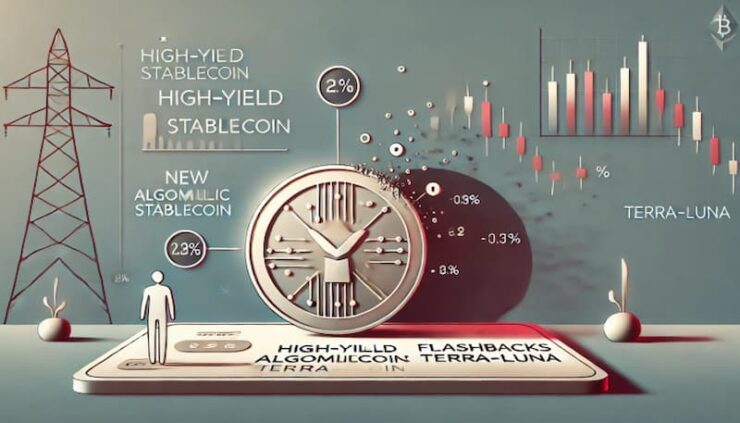The crypto world is once again holding its breath as Sonic blockchain unveils plans for a high-yield algorithmic stablecoin, stirring uneasy memories of the Terra-Luna collapse that wiped out billions. With promised yields reaching 23% APR, critics warn the project could trigger déjà vu risks the industry can’t afford.
In a market still recovering from 2022’s brutal losses, many wonder: Is DeFi repeating the same mistakes?
According to Andre Cronje, co-founder of Sonic Labs and the mind behind Yearn. Finance, Sonic’s proof of concept, is already producing double-digit returns. Cronje shared test figures showing:
- 200%+ APR at $10 million TVL
- 23.5% APR at $100 million
- Stabilizing around 4.9% at $1 billion
While the model looks scalable on paper, Cronje admitted the Terra-Luna disaster still haunts him.
“Pretty sure our team cracked algo stablecoins today, but previous cycle gave me PTSD,” he posted.

DeFi’s Lingering Trauma — Terra’s $40 Billion Implosion
For many, Sonic’s announcement feels like history on repeat. In 2022, Terraform Labs’ UST promised similar high yields, offering over 20% APY on Anchor Protocol. It ended in catastrophe, UST lost its peg, plunging to $0.30, while sister token LUNA collapsed 98% from $120 to less than a dollar.
The fallout didn’t just erase $40 billion; it sparked global regulatory crackdowns and left algorithmic stablecoins with a tarnished reputation.
Sonic claims to be the world’s fastest EVM chain, boasting 720ms finality, a technical feat that ensures rapid, irreversible transactions. Since its testnet debut in September 2024, Sonic has drawn attention for this speed advantage.
But critics argue speed won’t matter if the stablecoin’s algorithmic mechanics fail under market stress, which is the same flaw that doomed Terra.
Regulators Are Watching — MiCA Aims to End Algorithmic Risks
Governments aren’t waiting for another disaster. The EU’s MiCA regulation plans to ban algorithmic stablecoins outright, citing Terra’s collapse as proof these systems are too unstable.
Globally, regulators are demanding stablecoins be fully backed by transparent reserves, a model algorithmic versions struggle to deliver.
Remarkably, traders continue betting on LUNA’s remains, with $21 million in daily volume despite a 98%+ price drop since 2022. This persistent risk appetite shows just how fast crypto forgets — and why projects like Sonic can still attract attention, even after Terra.
The Takeaway
Sonic’s new stablecoin promises big rewards — but carries familiar risks. In a DeFi landscape still scarred by Terra, any algorithmic model promising high yields will face tough scrutiny.
The question now isn’t just whether Sonic can deliver on returns but whether DeFi has learned from its past — or is doomed to repeat it.





